Today, June 21, our country celebrates Indigenous Peoples Awareness Day. I’ve been thinking not only about the many contributions of Indigenous and Aboriginal peoples to our province and our culture, but also about the challenges they face, in particular around health services.
This brought to mind a stressful incident that happened to me during a recent a trip to Cuba. While I was there, my wallet went missing. I tried not to panic, but I have to admit, in the hours it took to resolve the issue, I realized how tenuous my situation was – I was in a foreign country, had no access to my funds, and didn’t speak the language. It was a scary, helpless feeling.
For some Aboriginal patients, accessing health services can be akin to that feeling of being adrift. In some cases, they don’t speak English, or English is their second language. In addition, sometimes cultural differences can create a disconnect – one that can hinder the accurate communication with the patient or, in some cases, can impede the patient’s comprehension of and contribution to their own treatment or recovery.
That’s where Eastern Health’s Aboriginal Patient Navigators (APNs), Katie Dicker, Solomon Semigak and Christine Abraham, come in. These individuals not only provide a little slice of home in what can be a challenging period in someone’s life, but more crucially are the cultural bridge between Aboriginal patients and health-care professionals.
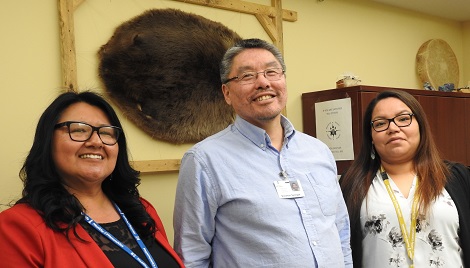
(l-r) APNs Katie Dicker, Solomon Semigak and Christine Abraham
The APN Program is a collaborative partnership between Eastern Health and First Light – the St John’s Friendship Centre, and is celebrating its 10-year anniversary at Eastern Health.
The program has evolved and grown over the years, but it all began with senior patient navigator, Katie. Then eight years ago, Sol came on board and this past January, Christine rounded out the team. The program saw 350 patients that first year. That number has since grown to almost 2,000, or over 160 per month.
“Our patients are so thankful for the smallest little thing,” says Katie. “While it might be small to us, to them we’re a familiar face and they’re happy that we’re here for them.”
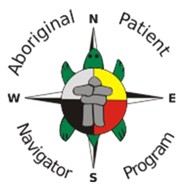
One Qalipu First Nation patient recently commented on the positive impact of the navigators. “When I was in my (hospital) room they’d come up and [say], “Do you need anything?” They are strangers but they almost made you feel like they were family, the way they treated you. I[‘ve] never seen that [kind of support] before in my life.”
An average day for an APN varies. It all depends on the needs of the patient. They’ve accompanied patients right from preadmission to various tests such as X-ray, blood work or EKG. They even help connect them to community services and assist with discharge planning.
However, one of the key services they offer is translation in Innu-Aimun and Inuktitut languages. But even among the various Aboriginal groups, there can be cultural or language barriers.
“That’s one of the reasons we’re so happy to have Christine,” says Katie. “Sol and I are Inuit and Christine is Innu. When we navigated patients from Natuashish and Sheshatshiu, we found there was a barrier because Sol and I didn’t speak the language. Since Christine arrived, that piece has opened up. You can just feel the connections she’s creating.”
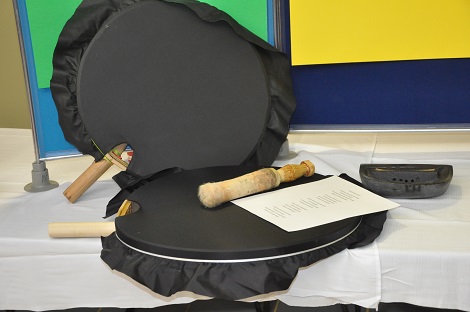
Inuit Drum
Which raises the question, if an Aboriginal patient is accompanied by a navigator and has the option for translation services, why is there a disconnect? Sol explains: “It’s really common for an Aboriginal patient to agree to everything they’re hearing. But it doesn’t mean they understand,” he stresses. “So one of the key teachings we bring to health-care professionals, is for them to ask the patient to repeat what they’ve been told.”
Christine shares a story that illustrates that point. “I recently accompanied a patient to their appointment,” she says. ‘As a member of their circle of care, I knew what their medical situation was. A few days later, that person put a post on social media that totally contradicted what they’d been told. When I brought it to the attention of the health-care provider, they told me that the patient had said they understood. The patient was contacted and soon after, I accompanied them to their doctor’s appointment, showed them pictures of what the doctor was saying and also and explained everything in Innu.”
In addition to navigating patients, Katie, Sol and Christine also provide cultural education sessions to Eastern Health employees. Part of the education guides health-care providers on how to incorporate Aboriginal cultural aspects into their care and discusses the history and impact of colonization and residential schools within this province. The APNs even share stories about Aboriginal culture, traditions and practices.
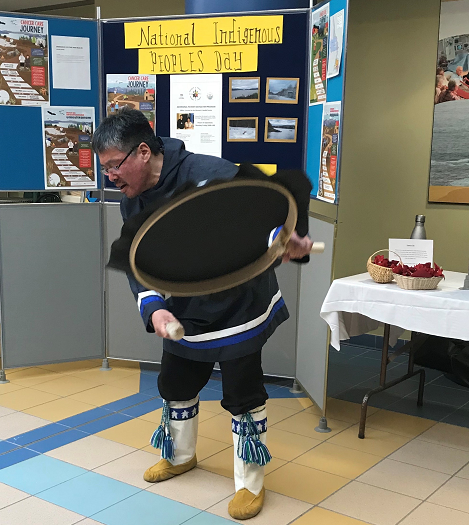
Sol performs at the 2018 Indigenous Peoples Awareness Day event at Health Sciences Centre
“One of the biggest changes I’ve seen in 10 years is that communication between Eastern Health and Aboriginal communities has really improved,” says Katie. “Through our work, we’ve helped staff at Eastern Health to better understand the Aboriginals of this province. And that education continues.”
Sol agrees. “More Eastern Health staff are aware of our program and actively seek us out. We even hear from other regional health authorities. More importantly, word continues to spread among Aboriginal communities.”
To acknowledge the impact they’ve made, Katie, Sol and Christine were awarded a certificate of appreciation today during an Indigenous Peoples Awareness Day Ceremony at the Health Sciences Centre.
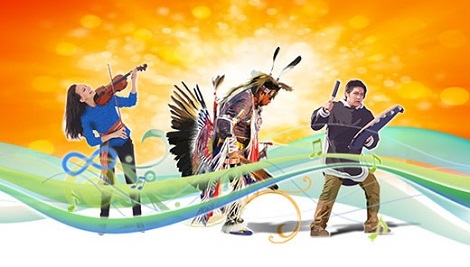
“Because of their work, Indigenous and Aboriginal patients and their families have a better understanding of their diagnosis, health care plans and treatment options, including when they return home,” stresses program director, Mollie Butler. “Coupled with our APNs support and teaching to health professionals and students, health care provided to Indigenous people is truly patient-centred!” ■
This story was written by Robyn Lush, a communications specialist with Eastern Health.
